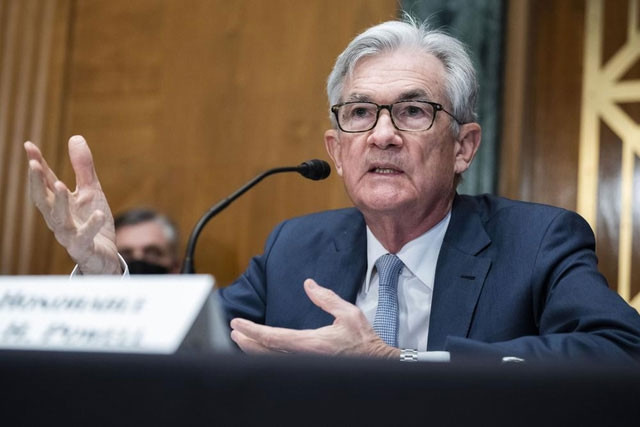The US Federal Reserve (Fed) cut interest rates as predicted. Gold prices rose sharply again after a rare plunge. US stocks continued to rise to new peaks.
As expected, the US Federal Reserve (Fed) decided to cut interest rates by 0.25 percentage points at its November policy meeting. This is the second consecutive interest rate cut in the context of continued cooling of US inflation and a weakening labor market.
Specifically, in the early morning of November 8, the US Federal Open Market Committee (FOMC) decided to lower interest rates by 25 basis points to 4.5-4.75%/year.
Previously, on September 18 (early morning of September 19, Vietnam time), the Fed had its first reduction since March 2020, with a reduction of 50 basis points.
In this meeting, all Fed officials agreed on the decision to cut interest rates by 0.25 percentage points, instead of some conflicting opinions like in the September meeting.
According to the Fed's assessment, the US has a fairly positive assessment of the inflation and labor market situation. Inflation is gradually returning to the target threshold of 2%/year, while core inflation (excluding food and energy prices) is still quite high, at 2.7%, but has decreased significantly compared to 9.1% in June 2022.
The FOMC believes that risks to its employment and inflation goals are roughly balanced.

According to the Fed, the unemployment rate in the US is on the rise but remains low. The US economy is assessed as "continuing to expand at a solid pace". In fact, in the third quarter, the US economic growth still reached 2.8%. In the fourth quarter, the forecast is still at 2.4%.
Previously, signals showed that the Fed would cut interest rates many more times until 2026, possibly below the threshold of 3%. Between March 2022 and September 2023, the Fed raised interest rates 11 times, bringing interest rates from a record low of 0-0.25%/year to 5.25-5.5%/year.
The Fed's rate cut has dragged the dollar down after a sharp rally following Donald Trump's election victory. The DXY index fell from 105.4 points to 104.46 points.
Gold prices have rebounded after a rare plunge following Trump’s election victory. The news of Trump’s election has pushed gold down from $2,740 an ounce to nearly $2,640 an ounce. Previously, gold fell from a peak of $2,789 on September 30.
By the morning of November 8 (Vietnam time), the world gold price had returned to 2,706 USD/ounce.
Gold is forecast to remain in an upward trend in the medium and long term as the Fed is in a cycle of lowering interest rates and the USD may weaken.
During his first term, Mr. Trump often pressured Fed Chairman Jerome Powell and his colleagues to lower interest rates. Powell was Trump's nominee for the position of Fed Chairman. Mr. Powell's term will end in early 2026.
According to CME Group's FedWatch tool, the market predicts the Fed could cut interest rates by another 0.25 percentage point at its December 2024 meeting, then pause in January 2025 to assess the impact of the policies.
The Fed's interest rate cut also helped US stocks extend their rally after a breakout on news of Mr. Trump's election victory. At the end of the session on November 7, the broad-based S&P 500 index rose 0.7% to a record high of 5,973.1 points. The technology-focused Nasdaq Composite index rose 1.5%, surpassing the 19,000-point mark for the first time.
In the November 6 session when Mr. Trump won the election, the Dow Jones index increased by 1,500 points.

Source: https://vietnamnet.vn/fed-tiep-tuc-giam-lai-suat-gia-vang-tang-vot-tro-lai-chung-khoan-lap-dinh-2339948.html






![[Photo] Impressions of the Can Gio Whale Festival](https://vphoto.vietnam.vn/thumb/1200x675/vietnam/resource/IMAGE/2025/10/09/1759984089762_image12334-5642-jpg.webp)
































































































Comment (0)